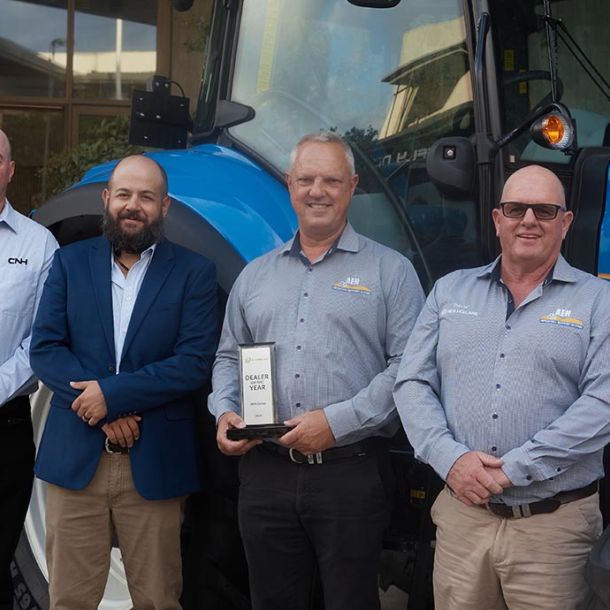Mixing the Cake: Strategic Cultivation, a Solution to Nutrient Stratification
Just like an unmixed chocolate cake would leave the hopeful taster wondering why they bothered, a crop sown into stratified soil conditions will leave the producer in a similar dissatisfied state. We are very thankful to Peter Watt, Senior Regional Agronomist at Elders Cowra, for sharing his wealth of agricultural knowledge and experience with us at our Reseller Conference last month. Read on for a summary of the key points on liming and stratification which we covered in this session.
If it’s worth liming, it’s worth liming well
Producers generally lime every 8-10 years, so it is very important to make that incorporation work to its utmost benefit. Liming is a significant expense which gives huge advantage when mixed to an adequate depth (top 10cm soil layer). Shallow incorporation of lime has become more and more common with the implementation of zero or no-till systems. This can often result in surface-concentrated lime, and the PH level of the soil ‘downstairs’ becomes severely limiting.
It’s what’s downstairs that counts
A sandwich layer of acidic soil is becoming a common obstacle in many areas of south eastern Australia, due to this shallow liming issue. Working in areas with this acidic subsoil layer can severely limit crop yield, especially if the crop is not particularly acid-tolerant.
The simple act of growing a plant actually neutralises the surface soil; it pulls magnesium from deep in the soil and drops it on the surface. However, this means that although the surface may improve, the deeper layers of soil can in fact acidify, resulting in this sandwich layer. Therefore although a soil test in the top layer of soil may look great, soil tests needs to be done to depth to determine the state of the soil below. According to the GRDC paper on Deep Incorporation of Lime, this is ideally 50cm.
For example, in highly acidic soil levels of ph 4.2, the saturation of minerals like aluminium and manganese is toxic to the plant. It also limits to access to phosphorous and other essential nutrients. So a plant grows in the top layer of soil, and when its roots strike the hostile acidic layer of subsoil, they will pull back. This compromises the cell division that occurs at root ends, which is essential for plants to obtain water and nutrients.
Mix the Cake, and Mix it to Depth
Deep root structure is hugely beneficial to a plant. Not only is there a wealth of nutrients, it also improves drought tolerance and resistance. It’s imperative to get the root structure down into the subsoil to utilize the full potential of the soil resource. In order to do that, the soil levels need to be right. Once the subsurface acidity layer is fixed, the crop roots have unrestricted access to soil and can grow to their maximum potential.
Mixing the cake is crucial. The lime that neutralises these acidic soils needs to be mixed to depth. It moves 0.5-1cm every year through chemical equilibrium, but the best way to get it down into the soil is to “mix the cake, and mix it to depth”.
Stratification of Nutrients
Lime isn’t the only thing that needs mixing. Nutrient stratification is a common occurrence which can reduce the crop’s ability to access soil nutrients, significantly reducing crop yield. Stratification of nutrients occurs naturally in all cropping systems, but is accentuated in no-till systems.
Mobile nutrients such as nitrogen and sulfur can move deeper into the soil profile. This increases stratification and creates nutrient deficiencies in the topsoil if they move past the rooting zone. Conversley, immobile nutrients such as phosphorus and potassium can be concentrated – or stratified – in the top 10-15 centimetres of soil.
Farming systems can exacerbate nutrient stratification. For example, reduced tillage prevents soil mixing. This makes banded nutrients even more distinct, either horizontally in drill rows or by vertical concentration in surface or subsurface layers. See whitepapers listed below for more information on nutrient stratification.
Embrace the Steel
Zero-tillage and reduced tillage techniques have been adopted significantly over the last 2-3 decades, locally and in most of southern NSW and south-eastern Australia. This in itself has been wonderful for soil preservation, nutrient use and water efficiency. However, there is a consequence to it which we need to be aware of.
We have considerably reduced cultivation over the last 20-30 years for very good reasons. But strategically, we need to “embrace the steel again”, to ameliorate some of these issues.
Related Whitepapers
-
SANTFA article:



